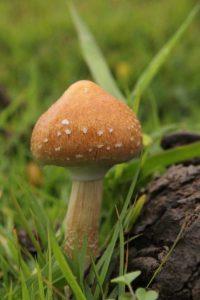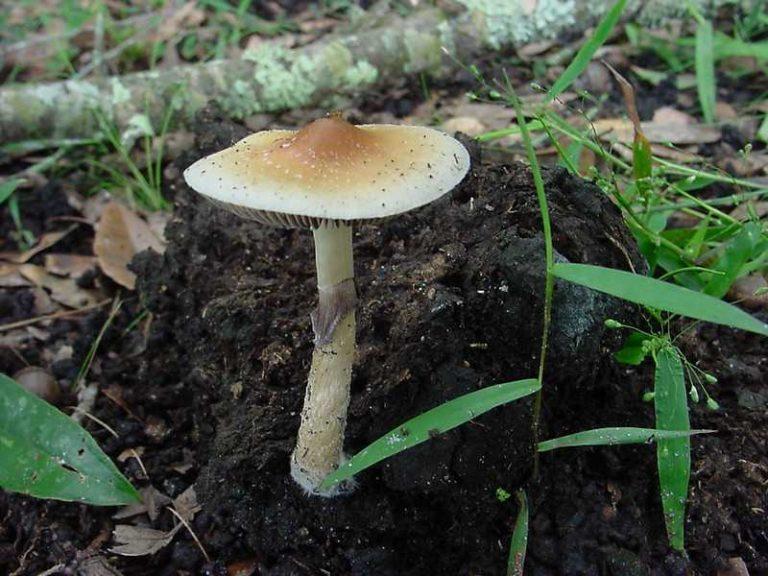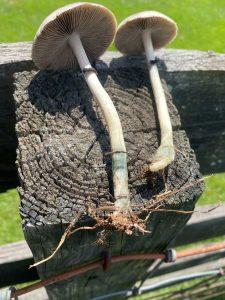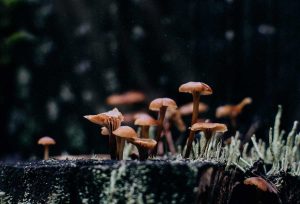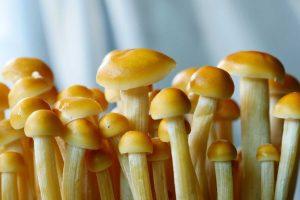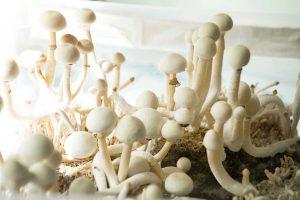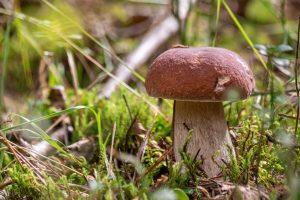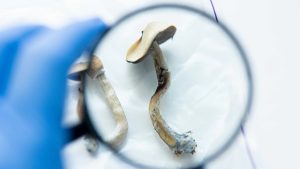Where Do Psilocybin Mushrooms Grow?
- Jake Peter
- Published: November 7, 2023
- Updated: March 5, 2024
- Fact-checked by Dr. Desiree Granados
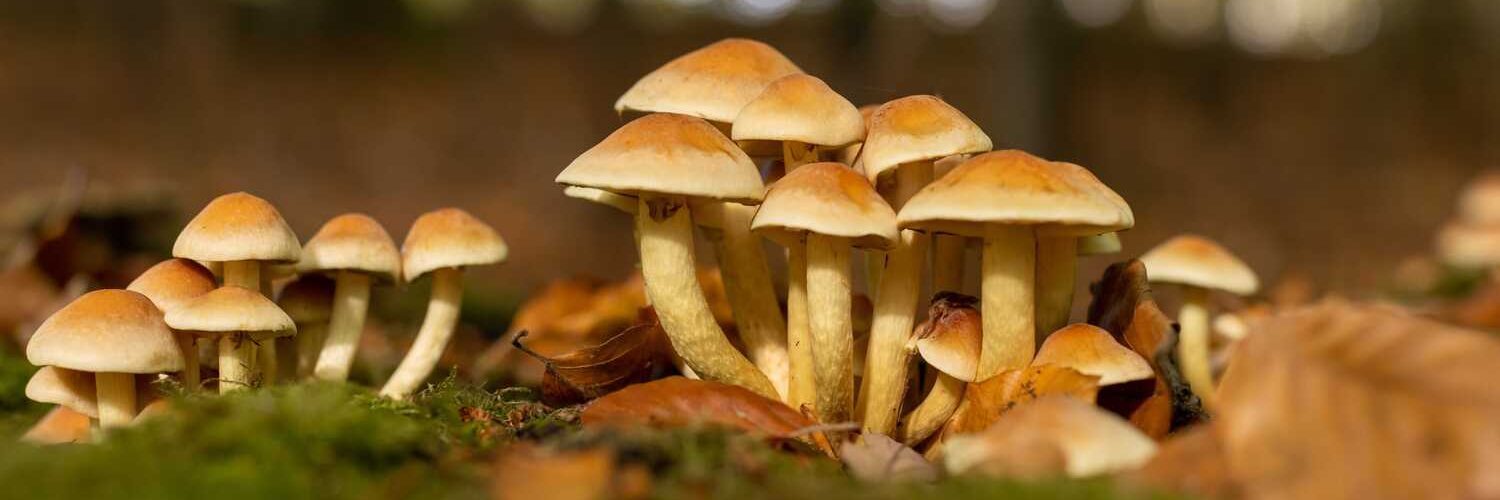
Psychedelic mushrooms have been used as part of religious ceremonies for centuries, and in more recent years psilocybin mushrooms have gained traction as a viable alternative medicine. Although some regions of the United States have decriminalized these plants and legalized their use in supervised medical settings, they remain illegal under federal law due to their classification as a Schedule 1 drug.
Nevertheless, psilocybin mushrooms can often be found in the most ordinary of natural settings. Read further to learn where you can find magic mushrooms in the wild and how to identify them as you search.
What Are Psilocybin Mushrooms?
Psilocybin mushrooms, often referred to as “magic mushrooms” or “shrooms,” are fungi that contain the naturally occurring psychoactive compounds psilocybin and psilocin. These compounds are known for their hallucinogenic effects that, similar to LSD, induce changes in perception, mood, and cognitive processes.
While psilocybin mushrooms have long been used recreationally, shrooms also offer genuine medical benefits for patients suffering from conditions like depression, anxiety, and PTSD.
Where Do Psilocybin Mushrooms Grow Naturally?
Psilocybin mushrooms primarily grow in moist, fertile, and humid environments, with a particular affinity for grasslands, fields, and forests. These mushrooms can be found in North and South America, Australia, Europe, and parts of Asia, and they’re generally discovered in tropical or subtropical climates.
Within the United States, magic mushrooms can be found in:
- The Pacific Northwest: One of the most common regions to find psilocybin mushrooms growing in the wild is the pacific northwest, ranging from the Washington state border with Canada all the way down the coast to Northern California. Because psilocybin thrives in moist areas, the rainy PNW is an ideal place to find them.
- The Midwest and Northeast: Psilocybin is commonly found in the area stretching from Ohio, Pennsylvania, New York, and Vermont. Psilocybin are most commonly found in damp areas during June through November.
- The Gulf Coast and Southern States: Magic mushrooms can be found in forests along the Gulf Coast, as well as in cow manure in South and East Texas and Central Florida. They can also be found in the forests of other southern states like Tennessee, Mississippi, and North Carolina.
- The Southwest – Psilocybin is more scarce in these regions (New Mexico and Arizona), but you might be able to find varieties such as P. azurescens., P. Mexicana, P. aztecorum, P. cinctulus, and P. hopiisome in forested areas during July to September.
How to Forage for Psilocybin Mushrooms
Foraging for psilocybin mushrooms requires knowledge, caution, and a respect for nature. It’s important to note that many factors, including temperature, humidity, and season can significantly influence the growth of these fungi. They are more likely to be spotted during warm, rainy seasons.
Good places to look for psilocybin include:
- Woodlands / Forests
- Grasslands / Fields
- Pastures
- Dung / manure
- Decaying wood or plant material
- Moist, rich soils
Ensure you have permission to forage in the area you choose, and remember that consuming wild mushrooms can be dangerous if you are not absolutely certain of their identification.
How to Identify Magic Mushrooms in the Wild
Psilocybin mushrooms can be found in the wild and identified by their distinctive appearance. When looking for mushrooms, we recommend carrying a field guide with photographs during the hunt to properly identify the mushrooms you encounter, as many poisonous ones can look similar. Also note that different varieties of psilocybin mushrooms will have different distinctive features.
When you find a potential psilocybin mushroom, inspect it thoroughly, noting the cap color, stem thickness, and gill pattern:
- Cap: Conical, funnel-shaped, or flat
- Stipe / Stem: Usually turns blue/purple when touched. Stem often has a ring.
- Color: Usually golden brown with bluish/purple hue or spots
- Hymenium (underside of cap): Gills present
Remember that accurate identification of psilocybin requires an experienced eye, and that psilocybin mushrooms are often confused with poisonous varieties. Always err on the side of caution when foraging for mushrooms.
Conclusion
In conclusion, whether you’re an enthusiast, a researcher, or simply curious about the natural world, understanding where and how psilocybin mushrooms grow offers insights into their ecology and the ecosystems they inhabit. However, it’s crucial to approach foraging with caution, respecting both the fungi and their habitats.
More info on Psilocybin from The Sanctuary Wellness Institute:
How we reviewed this article:
- National Library of Medicine
https://www.ncbi.nlm.nih.gov/pmc/articles/PMC5509636/ - Understand Where Mushrooms Come From
https://psychedelicinvest.com/where-can-i-find-psychedelic-mushrooms-growing-naturally/ - The 25 Best U.S. Counties for Mushroom Foragers
https://www.movebuddha.com/blog/mushroom-foraging-best-counties/
Current Version
March 5, 2024
Written By
John DiBella
Fact-checked By
Dr. Desiree Granados
Editorial Process
Our Editorial Process
First Published
November 7, 2023
Written By
Jake Peter
Fact-checked By
Dr. Desiree Granados
Editorial Process
Our Editorial Process

Jake Peter received his journalism degree from Emerson College and has been writing content for the Sanctuary Wellness Institute since 2021. He is passionate about all things cannabis.

